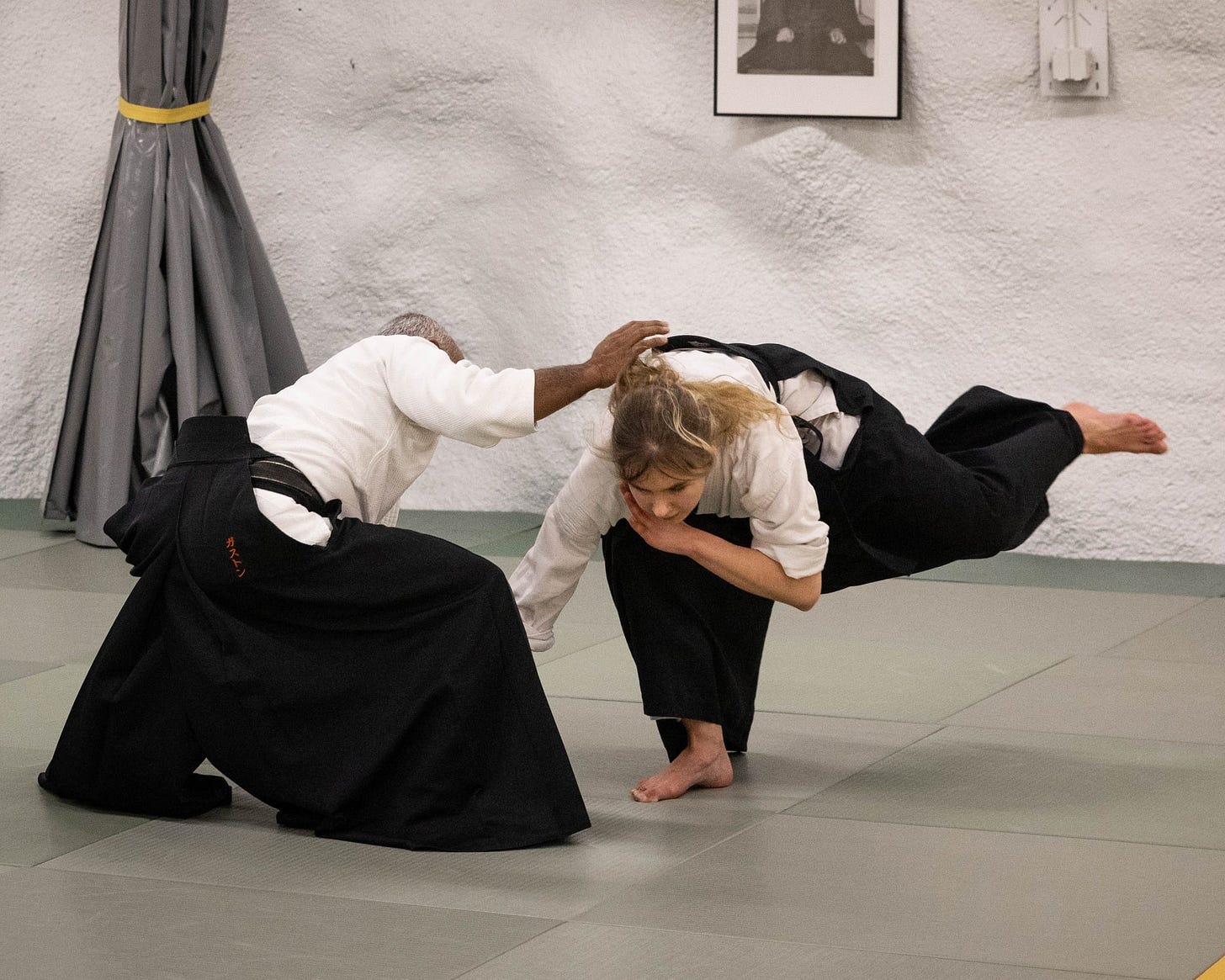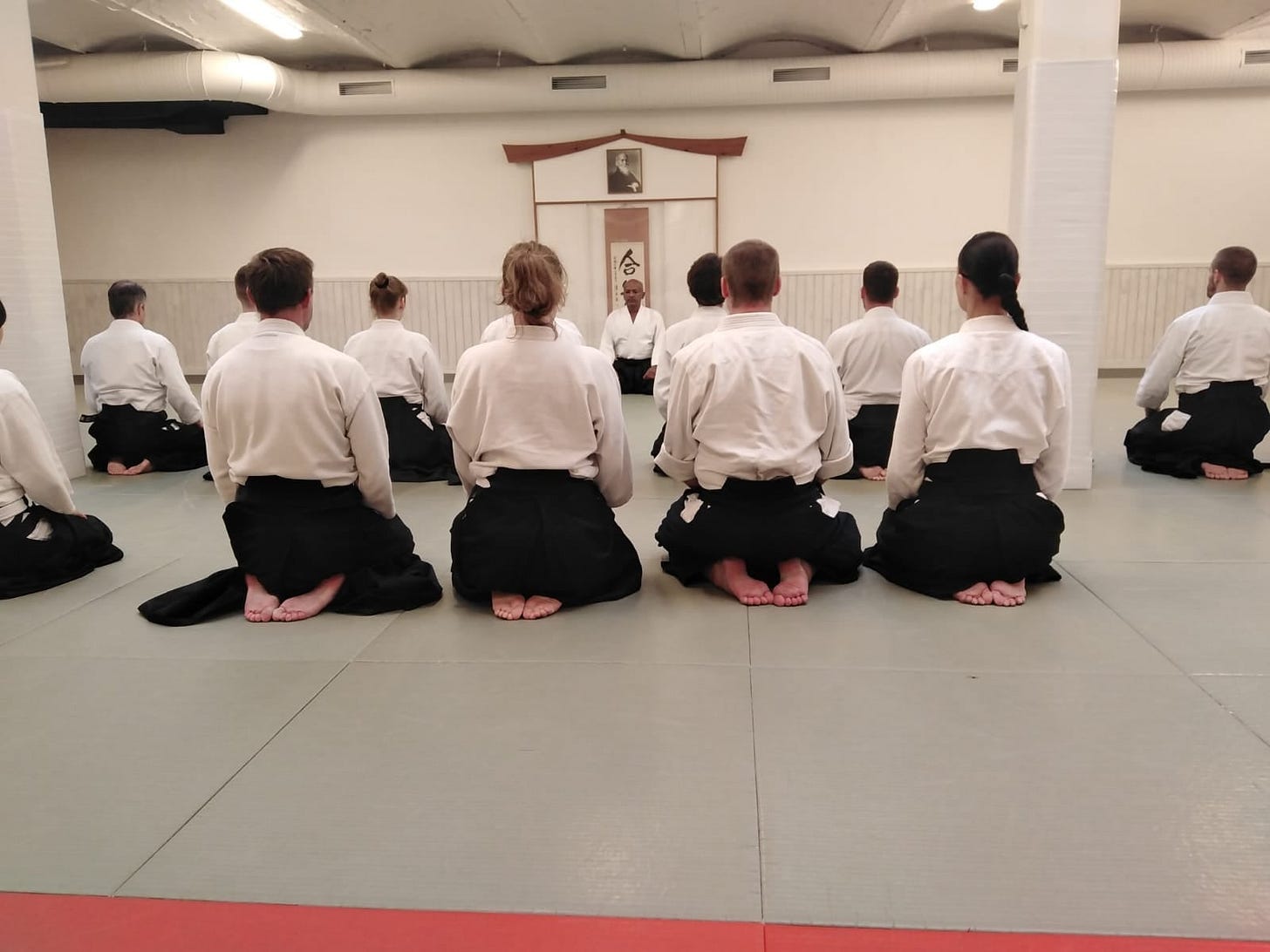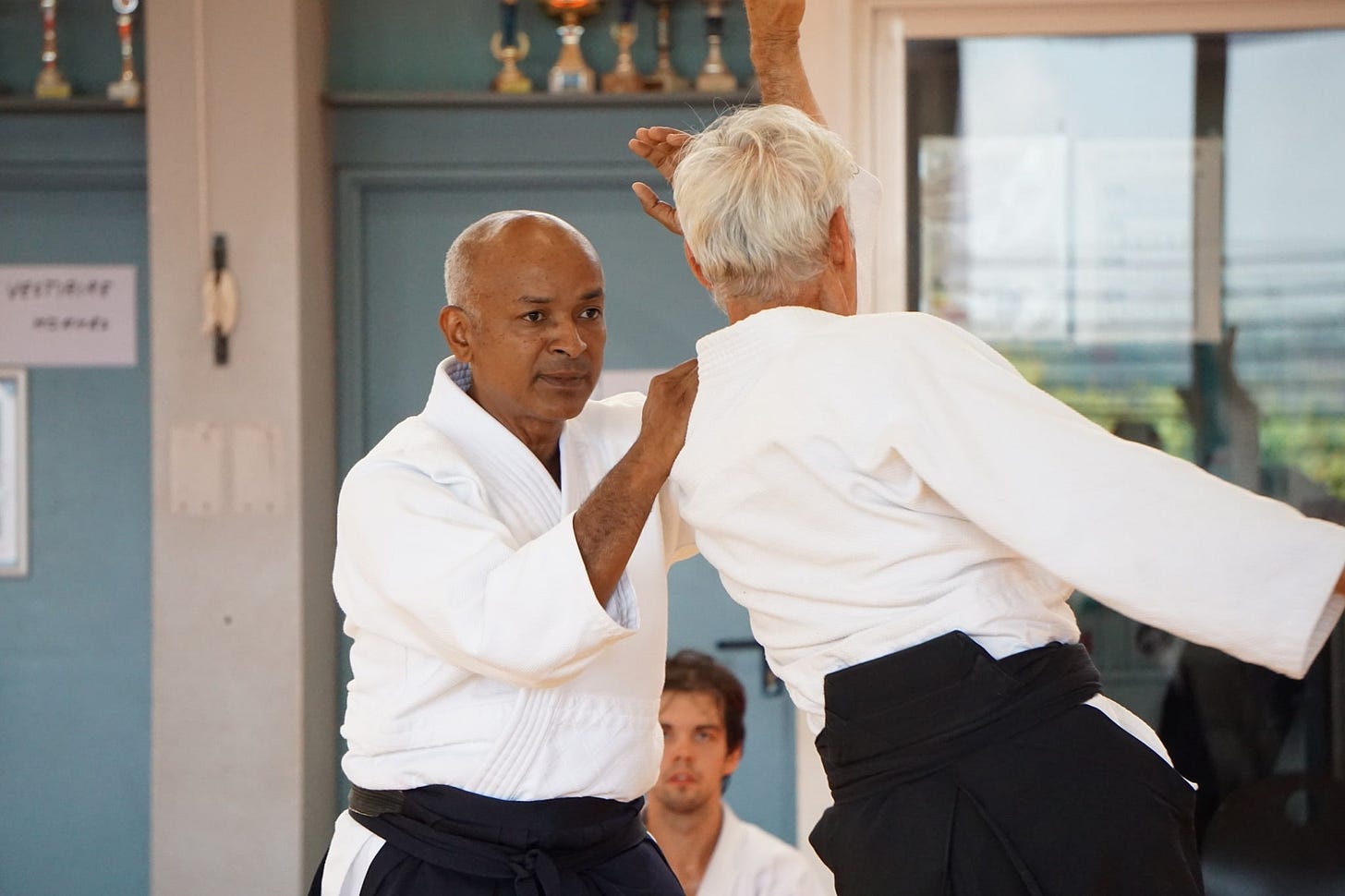Today, we’re pleased to share an article by Gaston Nicolessi (6th dan), a teacher from France. You can find more about Gaston and his work at the end of the text. For now, enjoy his perspectives:
“You’re ok?” I asked.
“Not really…” said Peter.
“What’s wrong? Are you hurt? Why did you stop practicing?”
“I have a cramp…” he mumbled while folding his hakama away.
I could tell by the look on his face that something else was at play, but I didn’t press him. I rather shifted my focus to the students who remained on the tatami.
A few minutes later, Peter left the dojo, avoiding eye contact as he walked out quickly—without any visible sign of a cramp.
I went on with my class and ended the session with a sense of gratitude for the joy and happiness Aikido seemed to give everyone on the mat.
Peter didn’t show up for the next classes and I forgot about the whole thing.
Two days later, however, I received a surprising text from him. He wrote he could no longer tolerate my 'odious' attitude and was quitting the dojo.
The message left me puzzled, dismayed, and, honestly, a little angry.
I tried to recall the last classes with Peter and couldn’t think of any specific moment or incident that could have triggered such a blow.
“Any idea, anyone?...” I asked my fellow teachers and students.
“Hum, not really… but I think he resented the fact that you took me before him in the uke line-up!” replied one of the seniors.
“And you know, Peter thinks he deserves no less than the first ranks,” added someone else.
“That wouldn’t surprise me very much either,” added another teacher, “you must be right!”
I was astonished.
“Really? You think so? But he has been around for so many years, he’s one of the eldest members of our dojo…” I muttered, in awe.
“That is exactly why his position in the uke line-up matters so much for him…”
The Uke Line-Up Tradition
The order of appearance for the demo techniques as an uke for the teacher, the uke line-up: that is what it was all about.
My first instinct was to dismiss the issue as childish, blaming Peter’s ego and immaturity.
But, with time and reflection, I found out I was also responsible for this bitter outcome, or at least responsible for the framework that allowed it to happen.
Of course.
Some of you are familiar with our dojo, founded by the Sensei who entrusted me to take over his responsibilities a few years ago.
And regarding the uke line-up, his rule seemed quite simple: always start with the most senior student, with the highest grade, and continue like so until the end of the class.
That was the basic principle but, of course, there were exceptions… whose grounds (unfortunately) remained known only to the Sensei.
At first sight, this rather strict ranking pattern seemed perfect to build hierarchy amongst the students, in a very neutral and logical way.
But it also tended to make everyone’s position in the dojo “immutable” and engrave in everyone’s mind that the smallest change in the uke line-up meant a definitive disgrace or promotion for the uke involved.
As the new Dojo-Cho, I should have questioned this uke line-up system and seen if it fitted my own vision of the dojo and the way I wanted to lead the students.
For failing to do so with honesty and determination, I triggered Peter’s reaction and must share some of the responsibility with him.
This story is based on true facts but the names are fictional.
How do you do it?
If you’ve encountered similar situations in your dojo, I’d love to hear your thoughts.
How do you choose your uke line-up when you teach?
Do you follow a strict ranking pattern, an age pattern, a gender pattern, or do you pick your uke depending on the techniques to be shown? Or do you always pick the same young and athletic ukes for your demos and basta?
The story taught me a valuable lesson. Here are four simple rules I now follow when selecting uke:
Keep everyone involved - they can be picked anytime
Keep it flexible - be free to pick anyone, anytime
Keep it alive and fun
Adapt your technique to your uke’s ability - and not the other way around
At the end of the day, everyone on the mat deserves attention from their teacher, one way or another. And that’s what really matters.
Giving my attention to everybody, I hope to keep the students happy and our dojo healthy.
About author
Gaston Nicolessi, 6th dan Aikikai, is a French Aikido teacher in Toulouse, France. He leads the Dojo de la Roseraie, an iconic dojo founded in 1988 by Franck Noël Shihan. Gaston began teaching in 1996 and, since 2008, has conducted numerous seminars in France and internationally, including in Sweden, Finland, the Czech Republic, Slovakia, and Germany.
Through his teaching and personal example, Gaston promotes a supple and dynamic Aikido practice. His focus on rigorous technique, combined with the values of aiki, creates a practice that is as enriching on a human level as it is physically structured—where martial precision and enjoyment go hand in hand. For Gaston, the foundations of Aikido are awareness, joy, and connection.






Gaston, thank you for starting this discussion! In the past, a strict dojo hierarchy might have supported growth—or maybe not—but I believe the open approach you suggest is more relevant today.
When choosing uke to demonstrate techniques, I intentionally include a wide range, from 6th kyu to 4th dan, in no particular order. I also often take ukemi for them in front of others.
Sometimes, I pick someone with strong ukemi skills. Other times, I choose someone who is a challenge for me or isn’t able to take ukemi, requiring us to "negotiate" and find a way to demonstrate the technique together. The goal isn’t perfection but exploration—and showing students that they, too, can explore and practice with everybody.
Increasingly, I select uke intending to teach them something or help them expand their physical or psychological space.
However, for the past 3–4 years I have one consistent pattern: I make a conscious effort to alternate between men and women when demonstrating techniques.
Thank you for your input Klaus.